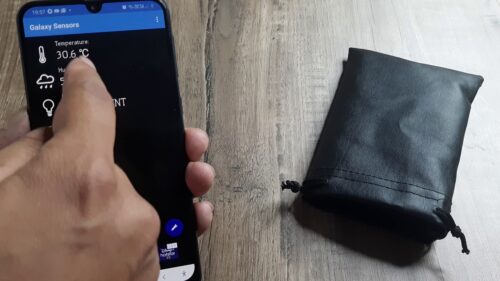Giveaway Best – Maintaining an optimal room temperature is essential for comfort, health, and productivity. While thermometers provide the most accurate readings, there are other methods to estimate room temperature if a thermometer is unavailable. This guide will explore various ways to check room temperature, both with and without a thermometer.
Using a Thermometer
Digital Thermometer
- Place the Thermometer: Position the digital thermometer in the center of the room, away from direct sunlight, heat sources, and drafts.
- Turn It On: Power on the thermometer and wait for it to stabilize.
- Read the Temperature: Once stabilized, read the temperature displayed on the screen.
Analog Thermometer
- Hang the Thermometer: Place an analog thermometer on a wall in the middle of the room, away from windows and heat sources.
- Allow Time to Stabilize: Give the thermometer a few minutes to adjust to the room temperature.
- Read the Temperature: Check the temperature on the scale once it has stabilized.
Without a Thermometer
Using Your Senses
- Feel the Air: Walk around the room and note how the air feels. If it feels comfortable, the temperature is likely between 68°F and 72°F (20°C to 22°C).
- Skin Sensation: If your skin feels cold and you need to wear extra layers, the temperature is probably below 68°F (20°C). If you feel warm and begin to sweat, it might be above 75°F (24°C).
Using Ice Water and Timing
- Prepare a Glass of Ice Water: Fill a glass with ice and water and let it sit for a few minutes.
- Place the Glass in the Room: Put the glass in the center of the room.
- Observe Condensation: After five minutes, check for condensation on the outside of the glass. If there is a lot of condensation, the room is likely warm. Little to no condensation indicates a cooler room.
Using a Candle
- Light a Candle: Place a lit candle in a draft-free area of the room.
- Observe the Flame: Watch how the flame behaves. A steady flame indicates still air, which is common in a room at a moderate temperature. If the flame flickers significantly, it could suggest drafts or fluctuations in temperature.
Technological Alternatives
Smart Home Devices
- Smart Thermostats: Devices like Nest or Ecobee can monitor and display room temperature.
- Smart Sensors: Place smart sensors around your home to get real-time temperature readings via a connected app.
Weather Apps and Online Services
- Local Weather Reports: Check local weather apps or websites for indoor temperature suggestions based on outdoor conditions.
- Smartphone Sensors: Some smartphones have built-in temperature sensors that can provide a rough estimate of room temperature.

Conclusion
Knowing how to check room temperature, whether you have a thermometer or not, can help you maintain a comfortable living space. While thermometers offer precise measurements, using your senses, simple experiments, or smart home technology can provide valuable estimates. Regularly monitoring your room temperature ensures a comfortable and healthy environment.
FAQs about Check Room Temperature
Can I use my phone to check room temperature?
Some smartphones have built-in temperature sensors, but they may not be very accurate for measuring room temperature. Apps can give rough estimates based on weather conditions and phone sensors.
What’s the ideal room temperature for comfort?
The ideal room temperature for comfort typically ranges between 68°F and 72°F (20°C to 22°C), but this can vary based on personal preference.
How do I know if my room is too cold?
If you feel cold, need to wear extra layers, or notice condensation on windows, your room may be too cold. A temperature below 68°F (20°C) is generally considered cool.
How do I know if my room is too hot?
If you feel warm, start sweating, or notice stuffiness, your room may be too hot. A temperature above 75°F (24°C) is generally considered warm.
Why is it important to monitor room temperature?
Monitoring room temperature ensures comfort, helps maintain health (preventing conditions like hypothermia or heat exhaustion), and can improve sleep quality and productivity.

